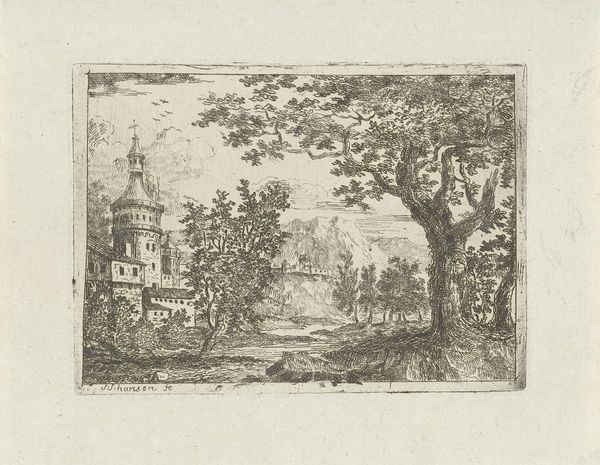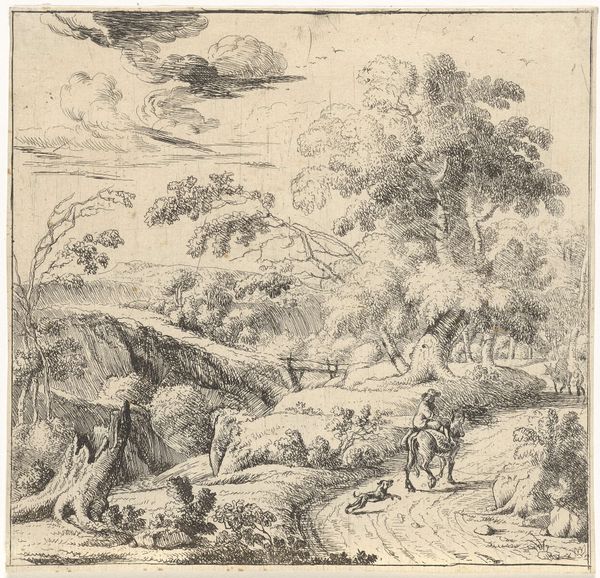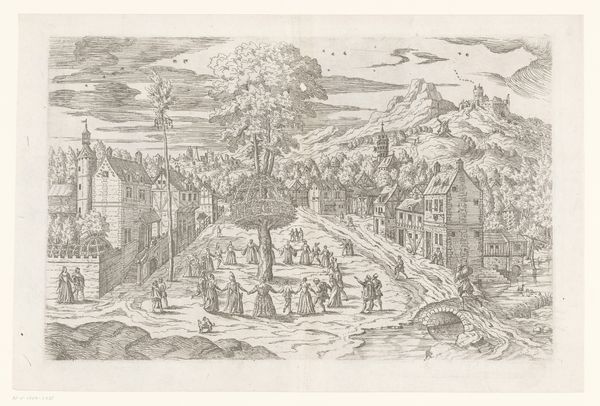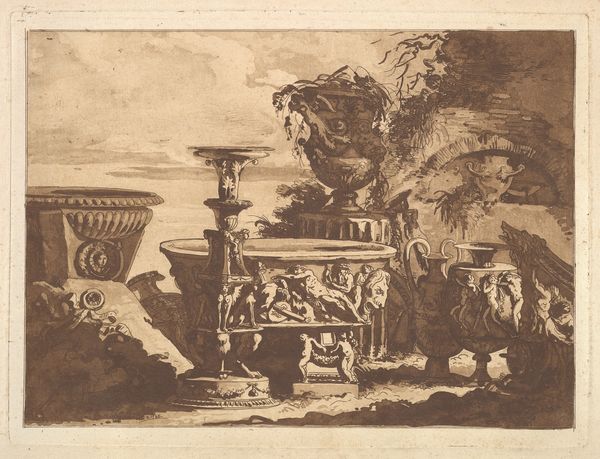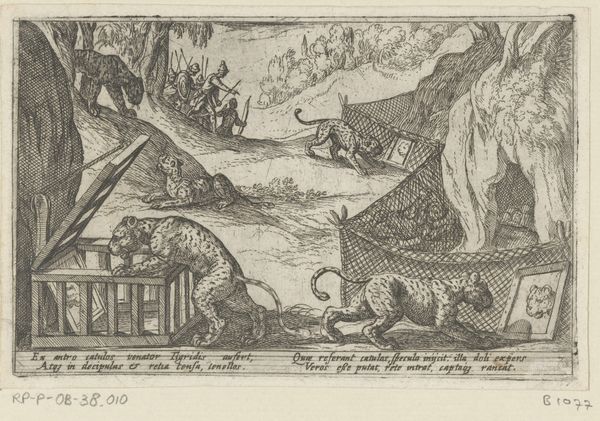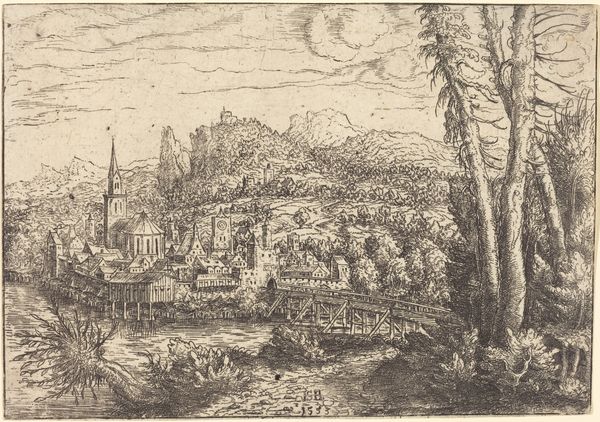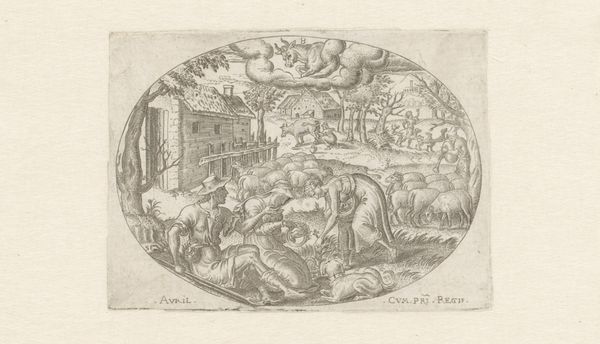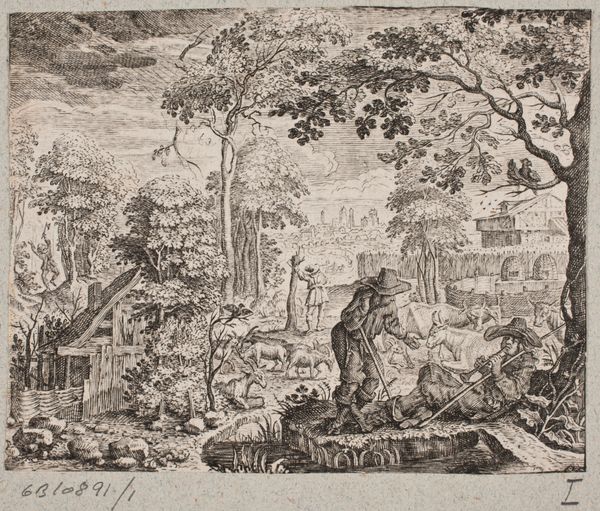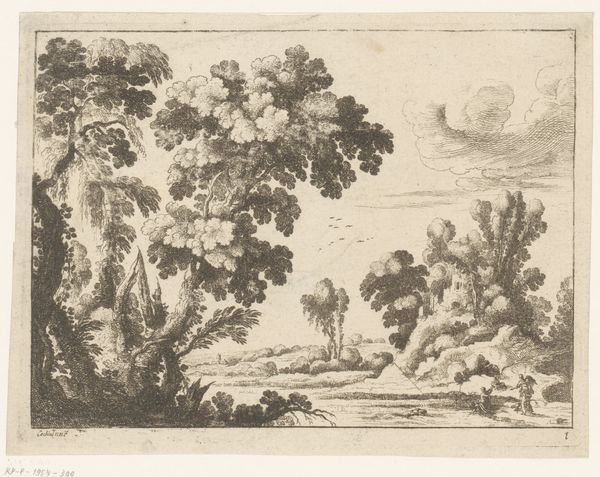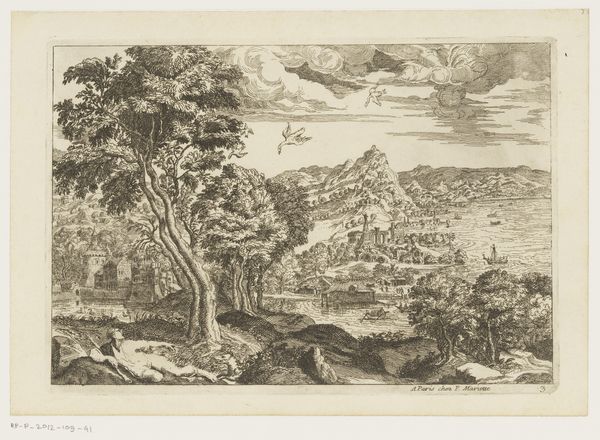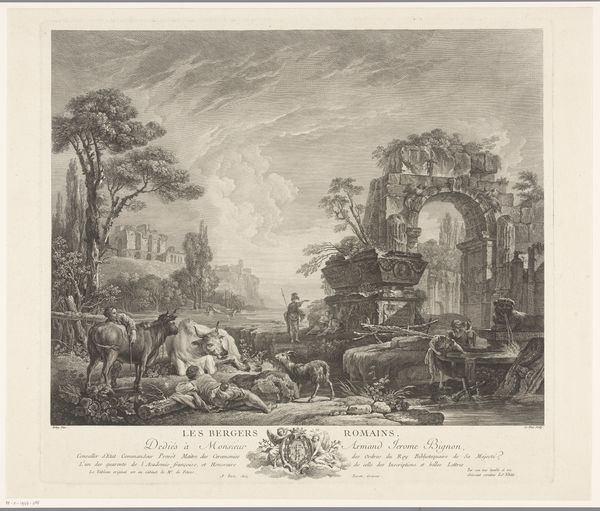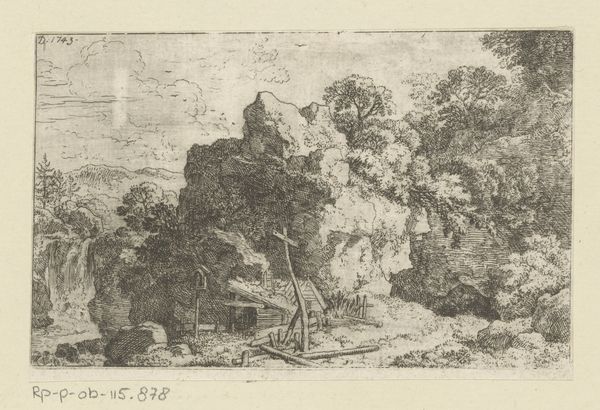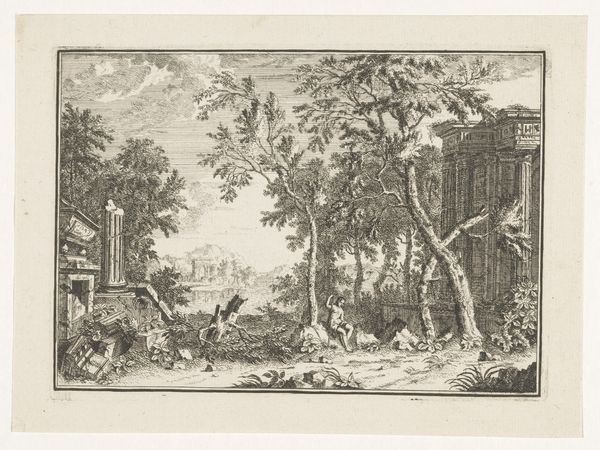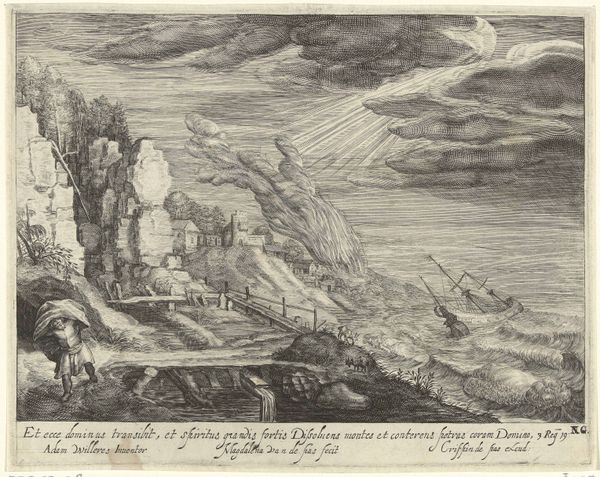
print, etching
# print
#
etching
#
landscape
#
waterfall
#
etching
#
11_renaissance
#
northern-renaissance
Dimensions: height 88 mm, width 114 mm
Copyright: Rijks Museum: Open Domain
Editor: Here we have "Landschap met rivier en waterval," or "Landscape with River and Waterfall," an etching by Georg Pecham from 1593. I’m struck by how dynamic it is despite the small scale. There's so much activity represented, with the figures on the bridge and the rushing water. What stands out to you when you look at this piece? Curator: What strikes me is how this landscape, while seemingly picturesque, engages with the political and economic realities of the time. Consider the figures crossing the bridge. Who are they? Are they merchants, refugees, or perhaps even soldiers? The bridge, a site of connection, also implies a site of control, of taxation, of potential conflict. Editor: That’s a great point. I was only thinking about it visually, but I didn’t consider the social implications. The people seem secondary to the landscape, almost overwhelmed by it. Curator: Exactly. And isn't that telling? Nature, untamed, still holds considerable power, yet humans are attempting to tame it and profit from it – note the watermill and bridge used for trade. Also consider the etching as a print medium: it’s about distributing imagery, ideas, and, crucially, constructing a specific idea of “landscape” for consumption. Does this image glorify the Northern Renaissance or is it a representation of dominance? Who benefits from this depiction of the landscape and access to this new medium? Editor: I never would have thought of that! The print medium itself plays a part in constructing a vision. Thinking about it as a kind of early form of propaganda really shifts the perspective. Curator: Precisely! It's about questioning whose narrative is being presented and for what purpose. It also invites us to question how representations of the "natural" landscape intersects with gendered dynamics, with labor divisions, and access to capital. These images did not circulate in a neutral space, but rather influenced broader conversations about ownership and identity. Editor: That completely changes how I see it. Thanks! Now I understand how much deeper an artwork can be if you look at its cultural context. Curator: Indeed. The more questions you ask, the more the artwork reveals about both the past and the present.
Comments
No comments
Be the first to comment and join the conversation on the ultimate creative platform.
